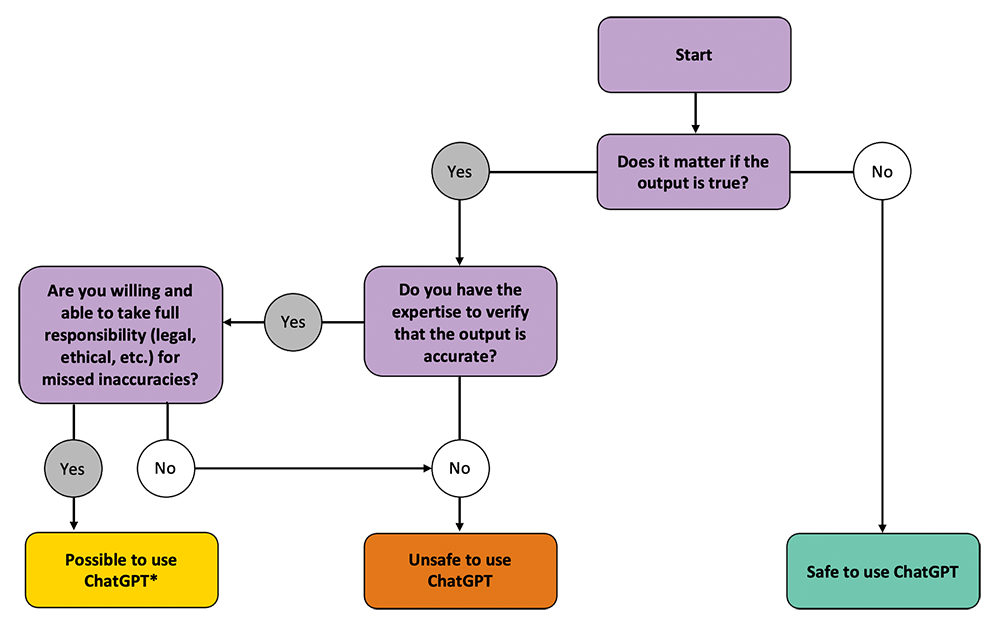Communicating with your students about A.I. is important. In addition to a general conversation about A.I., including the equity and privacy concerns around its use, you will want to talk with your students about when and how they may choose to use it for course work, and about circumstances where its use may not be appropriate or allowed. You can reinforce the ideas from in-class discussions through your syllabus and Brightspace course site.
At Dalhousie
As noted in the syllabus policy, all course syllabi are required to include a statement about your expectations around generative AI and large language models (e.g., Copilot). See Dalhousie’s AI Guiding Principles for additional information. Sample statements can be found in the Classroom Policies and Syllabus Statements chapter.
Introducing AI
Regardless of whether you choose to consider A.I.’s impact on your course design, teaching, and assessment, it’s likely that students have heard about ChatGPT and other A.I. tools, and like using them, too. As such, it warrants an open conversation. As an emerging technology, we are in a unique circumstance where everyone (you and your students) is learning about A.I. at the same time.
You might ask your students what they know about these technologies. Have they used A.I. in their studies? What are they using it for? What do they think about it? You can then share your experiences with artificial intelligence.
Not sure how to have this conversation?
The CLT has developed a set of PowerPoint slides to help your students learn more about generative AI. You can customize these to fit your own needs or context. Download the Generative A.I. at Dalhousie: A Resource for Students slides (.pptx).
You might also include in a general conversation with students about A.I.:
- What gen AI is and how it works
- Its limitations and ethical considerations
- When and how gen AI can be used in the course
- Importance of students not replacing their learning with AI
- Value of developing foundational skills on their own (which may include the skill of using AI appropriately
- Professional obligations to be well-trained in their chosen career
- Importance of citing and referencing AI use
You might consider demonstrating, either in person or online what AI can do well and the limits to its capabilities, which may spark additional conversations.
Setting Clear Expectations
It’s important to be very clear with students about when and how they can or can’t use artificial intelligence tools in their coursework. Emphasize, too, that these parameters will be different for each instructor, so they shouldn’t make assumptions from course to course.
As a metacognitive exercise, ask students to consider how A.I. use is affecting their course work and thinking. Does using A.I. affect how students approach assignments, where they’re focusing their time and efforts, or how they study and learn?
Be specific with students on what is allowed and not allowed. Can students use A.I. tools for:
- Idea generation and brainstorming?
- Time management/planning?
- Rephrasing and editing sentences or as a writing coach?
- Translation and language learning?
- Explaining confusing ideas? Creating chapter summaries?
- Studying for a quiz, prepping for exam?
- Generating images? Code? Slide presentations?
- Creating outlines? Drafts or final versions of writing?
This graphic, included in UNESCO’s ChatGPT Quick Start Guide, might be fruitfully reproduced in your syllabus or assignment instructions to help students make decisions about using ChatGPT in light of its sometimes-inaccurate output. Be sure to note that while students may arrive at “Possible to use ChatGPT,” they should be sure to verify each output word and sentence for accuracy and common sense.

